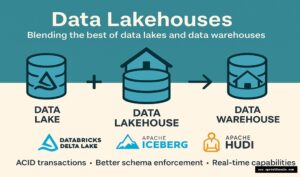Despite its significant advancement, Agile still faces five major difficulties. Agile’s eventual spread could be years or decades delayed if these issues aren’t resolved.
1. Consensus on What Agile Means
A basic notion of bureaucracy existed even if no formal description of it existed. Gary Hamel, a management expert, put it this way:
That’s how it’s done. It’s a cascade effect. It’s common practice for powerful people to appoint subordinates. Promotion is fought for by individuals. Compensation is linked to the position. The tasks are assigned. Managers conduct evaluations of their employees’ performance. Discretion is severely restricted by the rules.”
As anyone who worked in a 20th-century organization can attest, these were the assumptions upon which they operated.
In today’s world, there are many different interpretations of the term “Agile”.
Agility in the workplace is becoming more widely accepted, and some progress has been made toward that goal. With Agile, the goal is not to produce more work, but to extract more value out of the work that is already being done. It is essential to be fixated on providing clients with greater value.
To better understand what Agile is, there are numerous publications on the subject notably the Three Laws of Agile, The Heart of Agile, The Agile Manifesto, and many others.
2. Assuring that the company’s top executives are on board
Some executives in middle management in most large firms now understand the management revolution and have an Agile attitude. C-suite executives, on the other hand, are still lacking in their understanding of Agile and the ability to implement it. Even if nearly 200 CEOs of the world’s largest firms have agreed to lift a major barrier to Agile, more C-suite leadership is needed. To convince the C-suite that Agile is a good idea, change agents must be able to make their case succinctly and convincingly.
3. Combating Agile as A Buzzword
With most organizations assigning a high priority to becoming agile and very few being agile, it’s not surprising that many firms claim to be being Agile without much evidence. There are numerous types to choose from, including:
- An organization’s transformation process can take years if it is in the early stages of agile development. Microsoft has been working on this for the past decade. It is evident that a company is not yet entirely Agile during the transition stage, but there are pockets of Agile present.
- Other times, management tries to implement Agile, but because of a lack of knowledge ends up executing a simplified version of the Agile methodology. The popular article “The End of Agile” is notable for its satirical description of Scrum and Lean Startup methodologies. Additionally, “agility sweatshops” pose a hazard.
- The pursuit of purposely non-Agile ideals like internal concentration at the expense of customers and top-down processes that are anathema to real Agile is problematic in scaling frameworks.
As the name “Agile” becomes co-opted into general common speech without the specialized meaning that provided the benefits that led to its expansion, there is a risk of the equivalent of Gresham’s Law: the devalued public understanding of Agile will erode the value of genuine Agile.
This demonstrates the significance of establishing a clearer understanding of Agile’s core values and concepts.
4. Focusing on Agile’s Finer Points
A lot of Agile’s first 15 years were spent trying to figure out how to make it work for teams, first with one team and then with many teams, and finally with a lot of teams. During the last few years, progress has begun to be made toward the wider goal of becoming the entire company Agile. In the areas of manufacturing and distribution as well as retail and petroleum, as well as strategy and human resources, as well as budgeting and auditing, progress has been made in our understanding of Agile.
However, more work needs to be done on these areas as well as how Agile provides a crucial base for 21st Century management subtopics including digitization, big data, and the Internet of Things ecosystems and platforms.
5. Make Agile more professional
Until now, Agile has been a movement dominated by those who have put it to use. More than theories, practitioners have the Agile attitude. It is more of a practical approach than a philosophical one. In other words, it’s a tool for diagnosing and acting, not just a set of ideas. Knowledge gained through years of practice is the foundation of it. Many of the articles have been authored by champions of Agile. Several large consulting firms have recently entered the market, which is increasing the amount of marketing literature available.
The absence of business schools from the Agile world has been obvious in many situations as if they were content to teach the knowledge of yesterday. They could and should play a significant role in the future in a variety of ways.
There are two methods for analyzing the results of Agile transformation trips, both successful and unsuccessful. If GE had failed, how could Microsoft succeed? It is necessary to carry out longitudinal studies to get to the substance of what is going on, as Agile journeys can take a long time and require distinct mindsets to be thoroughly differentiated.
Since developing an Agile mindset is comparable to becoming a lawyer, doctor, or economist, it is necessary to have more specialized training in this area. This is what I’ve been suggesting. People that work with agile methodologies approach challenges in distinct ways, taking note of types of information, data, and concerns in their areas of expertise, and then analyzing those issues and coming up with unique solutions.
Years of training and practice have resulted in a wide range of attitudes and values, as well as distinct modes of thinking and problem-solving methods. Having an Agile mentality is not something that can be learned in a two-day workshop. Even though certain training and certificates exist, they fall well short of what is required, particularly at higher levels of accountability.







No Comment! Be the first one.